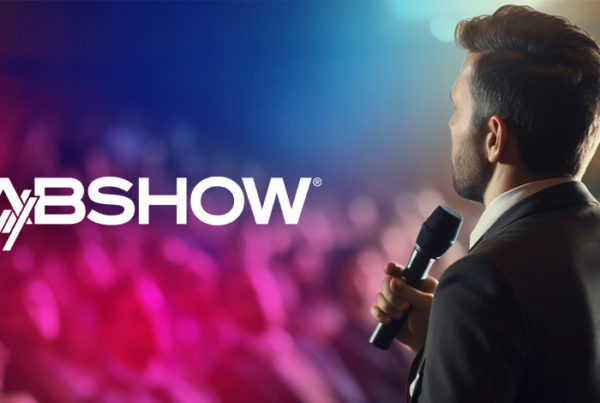As radio stations continue to build their local digital advertising offerings, they realize the need for scale, automation and efficiency. The path toward these goals is through technology. There are many local digital advertising software options. However, they are not consistent across the market, and most don’t prioritize a local digital seller as the primary user.
As you look toward revenue lift in 2025, most of this will need to come from digital. Having the best solution in place for sellers ensures they can propose, execute, report and bill with ease.
What Is Local Digital Advertising Software?
Local digital advertising software describes technology that enables the selling and launching of digital ad campaigns. It’s not the same as marketing automation systems or digital properties focusing only on execution, like Google Ads or social media platforms.
The key difference is the selling part, and that’s what radio stations need. Simple, easy and robust tools must support the entire life cycle of a campaign, from proposal to billing.
What Tactics Are Part of Local Digital Advertising Software?
A robust platform will include third-party digital tactics like:
- Display
- Video
- Geofencing (display or video)
- OTT/CTV
- Streaming audio
- SEM (search engine marketing)
- Location-based retargeting
- Social media
Those aren’t the only ad types that can be part of such a solution. When this software fully integrates with radio traffic systems, it can include airtime advertising in proposals and execution. A third category is O&O (owned and operated), which can consist of ads sold on station website properties and their own streaming audio.
Why Does Radio Need Local Digital Adverting Software?
Without a central hub for sales and execution, your sellers don’t have an anchor. They’ll need to use numerous systems for all parts of the process. If a campaign involves digital and radio, they’ll have to create proposals from scratch. It’s a lot of administrative work that eats into their core responsibilities of selling.
Further, once advertisers approve a proposal, sellers must execute the ads. In a local digital advertising solution, it happens in a few clicks. They connect to DSPs (demand-side platforms) and SSPs (supply-side platforms) to traffic the ads accordingly. It’s a seamless process with lots of automation behind the scenes to match ads to content (e.g., websites and streaming content) with consideration for targeting (geography, interests, demographics and behaviors).
Some radio stations outsource execution, which simplifies things but cuts into margins. Some have in-house marketing specialists who do the work, but that’s also expensive. Either of these approaches often prevents digital advertising sales from being profitable.
What Features Are Crucial in Local Digital Advertising Software?
When you’re assessing the choices, some features are more important than others. One point to consider is that most technology in this category wasn’t designed for radio; its primary users are agencies and broadcast TV.
These capabilities are crucial to finding the best solution for your station:
- Proposing and managing digital and airtime ads in one system: The digital platform should fully integrate with traffic software.
- A robust proposal builder: This functionality enables sellers to list all campaign tactics. It streamlines the process, and the output is a transparent customer-facing proposal.
- Easy order entry: Digital orders differ from airtime. The biggest difference is the targeting criteria to complete.
- Sophisticated targeting options: All digital ad types can target specific audiences. These options should be robust and ensure the seller can build the right audience for the campaign.
- Built-in invoicing: You should be able to set up campaign billing directly from the platform, reducing the need for extra steps.
- Transparent reporting: Advertisers want to understand campaign performance, and your software should generate clear and accurate reports.
- Customized dashboards: A modern system lets you create dashboard views around the metrics that matter the most.
- Web-based access and security: Sellers are on the go and should have access to the system from anywhere. Layered security from the provider also matters to ensure data remains safe.
What Are Other Differentiators to Consider with Local Digital Advertising Technology?
Along with these features, integration capabilities are pivotal to performance and return on investment. As noted, local digital advertising platforms can connect directly to traffic systems. It enables the full workflow in the order life cycle. This integration also supports reporting, ensuring a single source of data, more dynamic dashboards and single sign-on.
Quality inventory also sets solutions apart. The DSP and SSP to which a local digital advertising platform connect hold the key to quality. Not all are the same, and low-quality sites and content are rampant. The bid may seem cheaper, but performance can tank when ads run on clickbait sites. Some providers try to mask this to avoid quality conversations.
The ability to sell and launch advertising in restricted categories is a third consideration. Industries like cannabis, alcohol, gambling, political and fireworks require alternative DSPs. They have specific rules that govern compliant advertising, and you’ll need software and a DSP that adhere.
Is Your Station Maximizing Local Digital Advertising Revenue?
When you have the right technology, your station can capitalize on the expected growth of local digital advertising spending ahead. The only solution that has all the features and capabilities is Marketron NXT. We built it just for radio, and it seamlessly integrates with our traffic products.
Get ready for more revenue and profits with NXT.






